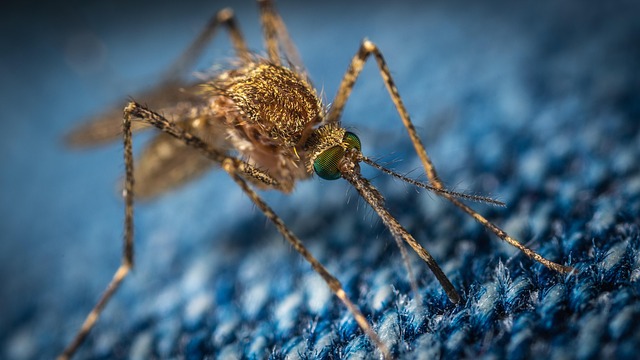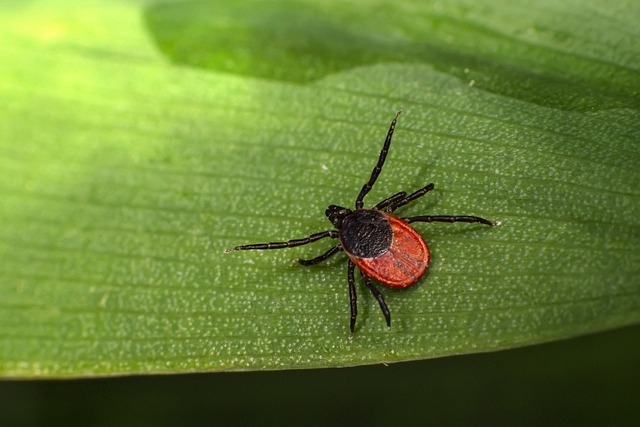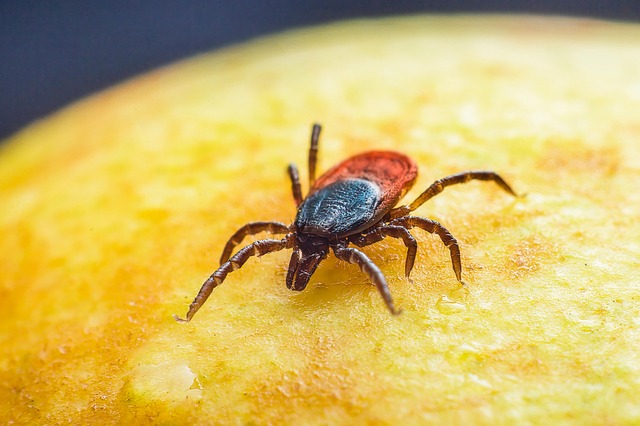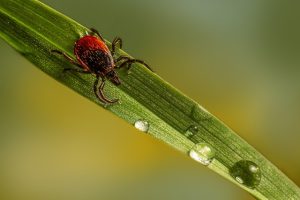Maintaining a healthy outdoor environment in residential areas requires effective mosquito and tick control strategies. Key measures include identifying and eliminating breeding grounds like standing water, proper landscape maintenance, regular inspections, and quick removal of infested items. Natural repellents like essential oils and herbs offer eco-conscious alternatives. Professional applications of EPA-approved pesticides target mosquitoes at different life cycle stages for lasting relief. Integrated Pest Management (IPM) combines biological control, habitat manipulation, and chemical interventions sparingly. Community efforts, including cleanups and education, are crucial. Preventing tick encounters involves neat landscaping, regular inspections, and indoor pest control measures. Seasonal variations impact mosquito and tick activity, guiding preventive strategies. Future methods aim for precision and eco-friendliness through technology and genetic engineering.
Mosquitoes and ticks are persistent pests that can greatly impact our outdoor enjoyment. This comprehensive guide explores effective mosquito and tick control strategies tailored for residential areas. From understanding basic pest behavior to implementing IPM (Integrated Pest Management) principles, we cover natural repellents, chemical options, community efforts, and seasonal considerations. Learn how to create an environment that discourages these pests and promotes a safer, more comfortable living space.
Understanding Mosquito and Tick Control: The Basics

Mosquito and tick control is a vital aspect of maintaining a healthy outdoor environment, especially in residential areas. These small yet menacing creatures pose significant risks to human health and well-being. Understanding the basics of mosquito and tick control is essential for any homeowner looking to protect their family and guests from these pesky and potentially harmful insects.
The first step in effective mosquito and tick control involves identifying and eliminating breeding grounds. Mosquitoes require standing water to reproduce, so removing items like old tires, buckets, or clogged gutters can significantly reduce their population. Additionally, applying appropriate repellents and using mosquito traps can help keep these insects at bay. For ticks, proper landscape maintenance is crucial; keeping grass mowed and shrubs trimmed reduces their hiding spots. Regular inspections and prompt removal of infested clothing or furniture are also effective preventive measures.
Identifying Common Mosquito Breeding Grounds in Residential Areas

In residential areas, identifying common mosquito breeding grounds is a crucial step in effective mosquito and tick control. Mosquitoes thrive in stagnant water, so the first place to look is any standing water around your home. This includes buckets, flowerpots, old tires, birdbaths, and even small puddles that collect after rain. Regularly emptying and cleaning these containers can significantly reduce mosquito populations.
Additionally, mosquitoes are attracted to lush greenery and damp, shady areas. Overgrown vegetation, dense foliage, and stagnant water in swampy regions are prime breeding grounds. Maintaining well-trimmed lawns, removing overgrown plants, and properly draining water features can create a less hospitable environment for these pests. Regular inspections and prompt addressing of potential breeding sites are key to managing mosquito and tick control in residential settings.
Natural Mosquito Repellents for Your Home Environment

When it comes to residential mosquito control, there are several natural repellent options that can create a comfortable, bug-free home environment. Essential oils like citronella, peppermint, and lavender have long been known for their mosquito-repelling properties. Diffusing these oils or using them in homemade sprays can provide an effective barrier against mosquitoes naturally.
Beyond essential oils, certain plants act as natural mosquito repellents when grown around your home or placed on windowsills and patios. Herbs such as basil, mint, rosemary, and marigolds emit scents that deter mosquitoes and other pests like ticks. Integrating these natural methods into your mosquito and tick control strategy not only reduces reliance on chemicals but also contributes to a healthier, more eco-friendly living space.
Chemical Mosquito Control Options: Sprays and Pests

Chemical mosquito and tick control often involve strategic applications of targeted sprays. These solutions can be highly effective in reducing mosquito populations, but they must be used responsibly to minimize environmental impact. Professional services employ safe, EPA-approved pesticides that are designed to eliminate mosquitoes at various stages of their life cycle.
Common chemical treatments include residual sprays that coat surfaces and barriers, killing adult mosquitoes on contact and preventing egg deposition. Targeted applications focus on breeding sites like standing water, ensuring that the chemicals directly impact where mosquitoes reproduce. This method not only reduces mosquito numbers but also breaks their breeding cycle, providing lasting relief from these pests.
Integrated Pest Management (IPM) Strategies for Effective Mosquito Control

Integrated Pest Management (IPM) is a holistic approach to mosquito and tick control that focuses on balancing environmental, economic, and social factors. This strategy involves a combination of methods such as biological control, habitat manipulation, chemical intervention, and community education. By integrating these tactics, IPM aims to minimize the reliance on pesticides while effectively managing mosquito populations.
Biological control agents like bacteria, viruses, or predators can be introduced to target mosquitoes naturally. Modifying habitats by eliminating standing water—a crucial breeding ground for mosquitoes—is another key component of IPM. Chemical interventions are used sparingly and targetedly, with options ranging from insect growth regulators to pyrethroids. Community education plays a vital role in promoting best practices, such as proper waste disposal and using mosquito nets or repellents, to break the mosquito life cycle and reduce human-mosquito interactions.
The Role of Community Efforts in Residential Mosquito Management

Community efforts play a pivotal role in effective residential mosquito and tick control strategies. By fostering collaboration among neighbors, local governments, and pest management professionals, communities can create comprehensive solutions to mitigate mosquito-borne disease risks. Simple measures like removing standing water sources, maintaining proper landscaping, and using mosquito repellents can significantly reduce breeding grounds and bite incidences.
Additionally, community-led initiatives such as organized neighborhood cleanups, educational programs, and shared resources enhance awareness about mosquito control. These collective actions not only protect public health but also foster a sense of community engagement, ensuring a safer and more enjoyable living environment for all residents.
Preventing Tick Encounters: Measures Within the Home and Yard

Preventing tick encounters within your home and yard is a crucial part of overall mosquito and tick control. Start by keeping your property neat and tidy, removing potential hiding spots like tall grass, brush, and woodpiles. Regularly inspect and maintain your outdoor living spaces, ensuring there are no standing water sources where mosquitoes breed. Install or repair screens on windows and doors to keep both insects and their disease-carrying partners at bay.
Inside your home, consider using insect repellents and pest control products specifically designed to target mosquitoes and ticks. Maintain a clean and clutter-free environment, as hidden corners can provide shelter for these pests. Regular vacuuming and laundry practices help remove any eggs or adults that may have made their way inside. By combining these measures, you create an inhospitable environment for ticks and significantly reduce the risk of encounters.
Seasonal Considerations for Mosquito and Tick Control

In terms of residential mosquito and tick control, seasonal variations play a significant role in effective pest management. Mosquito activity peaks during warmer months, typically spring through fall, when their breeding sites, such as stagnant water, flourish. This is also when people spend more time outdoors, increasing exposure to these pests. As temperatures drop, however, mosquito populations decline, making winter an ideal time for implementing preventive measures and preparing for the next season.
For tick control, seasonal considerations are slightly different. Ticks thrive in moist environments with lush vegetation, which is abundant during spring and summer. They can be particularly active when hosts like deer or birds are present nearby. While ticks may still be a concern during fall and early winter, their numbers typically decrease significantly as temperatures drop below freezing, rendering them less active. This seasonal understanding allows homeowners to adapt their control strategies accordingly, ensuring year-round comfort and safety in their outdoor spaces.
Future Trends in Residential Mosquito and Tick Management

As technology advances, future residential mosquito and tick control methods are expected to become more precise and environmentally friendly. One emerging trend is the use of smart sensors and IoT (Internet of Things) devices that can detect and monitor mosquito and tick activity in real-time. These innovations enable targeted treatments, reducing the need for widespread chemical applications. For instance, automated systems could activate traps or release natural predators when high insect activity is detected, minimizing ecological impact.
Additionally, genetic engineering and biopesticides are gaining traction as sustainable solutions. Scientists are developing mosquitoes with altered DNA to make them resistant to diseases they carry, potentially reducing their population without harming other organisms. Biopesticides, derived from natural sources like bacteria or plants, offer effective control while being less toxic to non-target species compared to synthetic pesticides. These future trends in mosquito and tick management aim to create healthier living environments with minimal ecological disruption.
